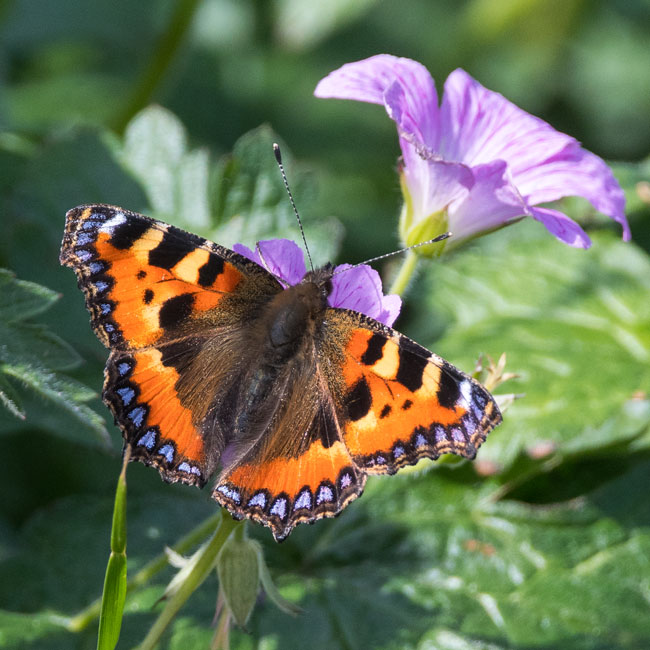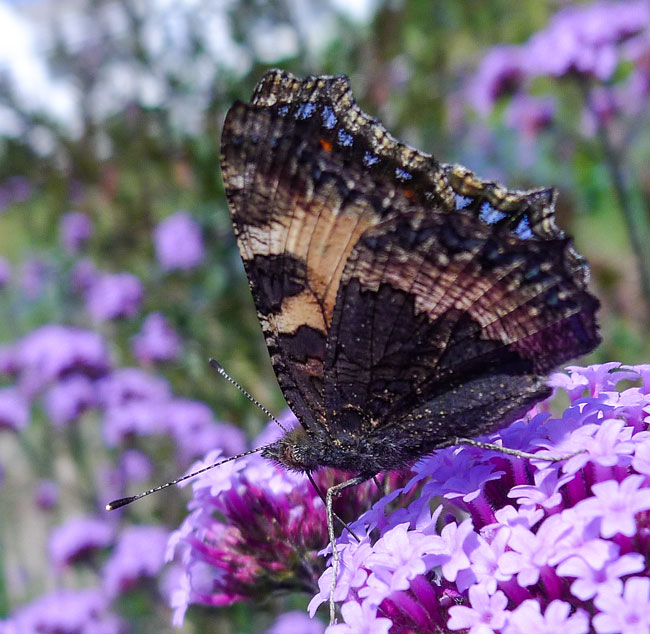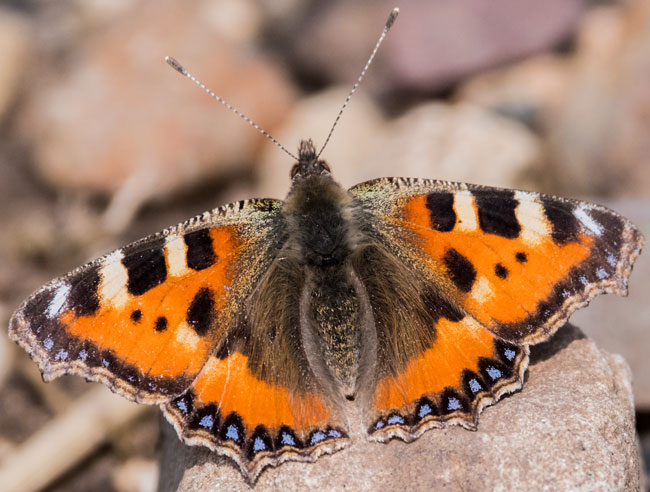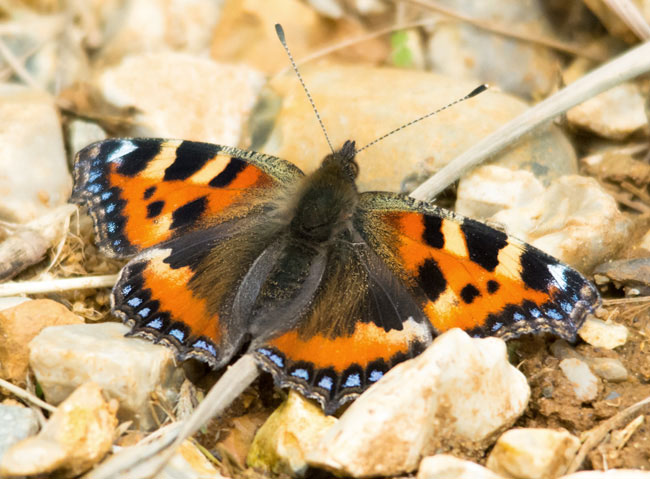
|
Small Tortoiseshell Butterfly
|
||
|
Taken at Troon on 27th September 2020 using Nikon D500 with Sigma 600 mm zoom lens.
|

|
|

| Underwing. Taken at Windemere on 16th July 2019 using Panasonic Lumix LX5 in macro mode |
 |

| Taken at Lochwinnoch on 18th April 2019 using Nikon D500 with Sigma 600 mm zoom lens. |  |

| Taken at Cley Marshes on 28th June 2016 using Nikon D5200 with Sigma 150-500 mm zoom lens. |  |

| Small Tortoiseshell Butterfly. |
| Species: Order: Family: Local Names: |
Aglais urticae. Lepidoptera. Nymphalidae. |
| Larval Food: Adult Food: Wingspan: Habitat: Flies/Found: Feature: |
Common Nettle and Small Nettle. Betony, Bramble, Dandelion, Devil's-bit Scabious and Field Scabious. . Male: 45 - 55 mm. Female: 52 - 62 mm. Almost anywhere. Any time of the year, even on the last days of December or first days of January if the temperature is high enough to wake them from hibernation. However, adults normally emerge from hibernation at the end of March and start of April. There are typically 2 broods each year, except in the north, where there is usually only a single brood. This butterfly has always fluctuated in numbers, but the cause of the most-recent decline is not yet known, although various theories have been proposed. One is the increasing presence of a particular parasitic fly, Sturmia bella.The fly lays its eggs on leaves of the foodplant, close to where larvae are feeding. The tiny eggs are then eaten whole by the larvae and the grubs that emerge feed on the insides of their host, avoiding the vital organs. A fly grub eventually kills its host and emerges from either the fully-grown larva or pupa before itself pupating. |